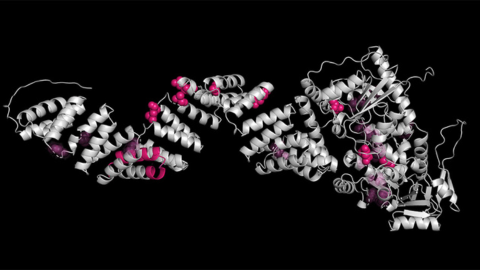What is a scientific editor?
Every peer-reviewed journal works slightly differently: Some have a great number of full-time staff members who edit science for a paycheck; some have only a few full-time, paid staff members but a vast roster of subject-matter experts who edit papers as volunteers; and some have yet other organizational structures to get the job done and the literature published.
Regardless of structure, at the heart of peer review are the people who decide which articles get published and which revisions need to be made to the science.
For the sake of simplicity, in this column, I’ll call these people “scientific editors” — and I’ll focus on the ones who get paid by a publisher, because, if you’re reading this column focused on careers outside of academia, you don’t plan to become a full-time professor who, as a service to the field, volunteers as an editor at a journal. You need a paycheck!
Another couple of things worth noting: Scientific editors are distinct from copy editors and proofreaders, who focus on clarity, spelling, grammar and style. Scientific editors are also distinct from editors-in-chief or executive editors, who are charged with setting a journal’s editorial mission, scope and strategy.
Now, without further adieu, meet Margot Brandt, a senior editor at Nature Communications.
Meet Margot Brandt

Like the vast majority of scientific editors, Brandt has a Ph.D. She studied functional genomics at Columbia University and the New York Genome Center. She earned her doctorate in cellular, molecular and biomedical studies in 2019.
“When I was in grad school, I was thinking about careers that were outside of academia but still very closely related,” said Brandt. “I wanted a career where I could learn about a variety of scientific topics, besides my own project.”
Brandt didn’t have professional editing experience before applying to Nature Communications but during her graduate studies had developed the ability to think critically about manuscripts, a skill she needed to demonstrate in order to get the job.
Brandt became an associate editor in 2020 and was promoted to senior editor in 2022. Since the journal covers so many topics, each scientific editor handles papers relating to their own expertise. Brandt is responsible for papers on genetics and genomics.
“My job as an editor is to decide whether the manuscript is a potential match for the journal and, if so, to guide it through the peer-review process and make decisions based on the reviews,” she said.
At Nature Communications, Brandt said, scientific editors don’t work with authors on the readability and flow of the writing: “I don’t edit phrasing. That’s up to the authors. If needed, we can suggest that they use a service to make the writing better. We sometimes suggest a few changes to the title or abstract, but that’s about it.”
What is it like?
Typically, Brandt starts her day by reading through two or three newly submitted manuscripts, assessing the results, methods and potential impact. She reads existing literature to help put the findings into context and decide if she wants to send out the papers for peer review.
It’s professors with full-time research positions who act as peer reviewers. Brandt needs them to do that important work in a timely manner, so there’s quite a bit of people-wrangling required.
After dealing with new papers, she might work on manuscripts in various stages of publication. That could require inviting — or following up with — potential reviewers, making decisions on papers after the reviews have come back, or other work.
She meets with other editors on staff regularly to go over strategy and to make sure they’re on the same page. “In general, we try to have our manuscripts discussed with at least one other editor somewhere in the process,” Brandt said.
The best and worst parts
Working with other editors is especially important when a paper is interdisciplinary and different subject-matter expertise is needed for a good evaluation of the work. Brandt said that’s the best part of the job. “They all have different expertise, and we can collaborate in a really productive way together,” she said.
Another great part of her job is getting to interact with and think about science. She has stayed close to research without having to focus on only one single project. She also attends conferences to stay up to date.
“I’m able to take a big-picture view on science, and then find papers that are of high interest to the community, make them better and publish them,” she said.
In addition to handling manuscripts submitted to the journal, editors also commission papers and organize conferences or collections of articles.
It isn’t an easy job. “I’m working all the time to get better at organization and time management,” Brandt said.
Anyone who has submitted a paper to a journal knows that there are a lot of demands placed on editors, and everyone has an opinion about whether the editor made the right decision or gave the right feedback.
“Of course, it feels bad to give a decision that is going to disappoint someone,” she said.
The skills needed
If you are thinking of becoming a scientific editor but wondering if your knowledge of the field is strong enough or your ability to assess new manuscripts is sharp enough, some journals have mentorship programs in which early-career researchers are mentored.
Nature Communications has one. So does the Journal of Biological Chemistry.
Brandt also suggested, to get a feel for the process, asking your principal investigator if you can help review manuscripts when they are asked to review them.
Enjoy reading ASBMB Today?
Become a member to receive the print edition four times a year and the digital edition monthly.
Learn moreFeatured jobs
from the ASBMB career center
Get the latest from ASBMB Today
Enter your email address, and we’ll send you a weekly email with recent articles, interviews and more.
Latest in Careers
Careers highlights or most popular articles

Upcoming opportunities
Friendly reminder: May 12 is the early registration and oral abstract deadline for ASBMB's meeting on O-GlcNAcylation in health and disease.

Sketching, scribbling and scicomm
Graduate student Ari Paiz describes how her love of science and art blend to make her an effective science communicator.

Embrace your neurodivergence and flourish in college
This guide offers practical advice on setting yourself up for success — learn how to leverage campus resources, work with professors and embrace your strengths.

Upcoming opportunities
Apply for the ASBMB Interactive Mentoring Activities for Grantsmanship Enhancement grant writing workshop by April 15.

Quieting the static: Building inclusive STEM classrooms
Christin Monroe, an assistant professor of chemistry at Landmark College, offers practical tips to help educators make their classrooms more accessible to neurodivergent scientists.

Unraveling oncogenesis: What makes cancer tick?
Learn about the ASBMB 2025 symposium on oncogenic hubs: chromatin regulatory and transcriptional complexes in cancer.

